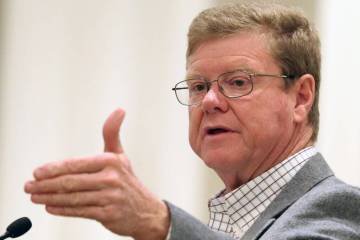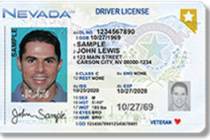Nevada recall efforts are not uncommon, rarely successful
A trio of state Senate recall attempts could have lasting impacts on Nevada.
If successful, Republicans would retake the upper chamber of the Nevada Legislature after having lost it in the 2016 election.
But that’s a big if.
Republican-filed petitions this month look to oust three state senators: Democrats Joyce Woodhouse and Nicole Cannizzaro and independent Patricia Farley. The move is not altogether uncommon in Nevada.
Since 1993, there have been more than 150 such efforts in Nevada, with people seeking to oust officeholders from the state level all the way down to city council.
But the process is lengthy and expensive and rarely results in a recall. No Nevada legislator has been successfully recalled since 1993, according to the Nevada Secretary of State’s Office.
But what exactly goes into recalling an elected official in Nevada? Quite a bit.
The petition
Starting a recall process is the easiest part. No reason is needed. Petitioners simply must file with the local county a “notice of recall” with three signatures from voters in the targeted official’s district.
After that, the work begins.
Petitioners have 90 days to gather signatures from at least a quarter of the voters who cast ballots in the race in which the candidate was elected.
Woodhouse and Cannizzaro were elected in 2016 in their respective senate districts, 5 and 6. Farley was elected to District 8 in 2014.
For most recalls, getting the requisite signatures entails going door to door asking voters to sign the petition. For the three Senate districts, that comes out to 36,728 valid signatures.
Further complicating the process, each recall effort seeks to replace, not merely oust, the sitting senators. In order for the Republican opponents to make it on a potential recall ballot, a separate petition would have to get the same number of signatures as the recall petition.
The count
Then the government takes over.
Once a petition is submitted, the county has four business days to count the signatures. If any petition that is turned in comes up short of the needed amount of signatures, it’s dead.
If it has enough, then it’s off to the Nevada Secretary of State’s Office.
That’s when things get a little trickier because the state does not verify every signature on the ballot.
Instead, the state pulls a random sample of either 500 signatures or 5 percent of the submitted signatures, whichever total is larger. In all three state Senate recalls, it will be 5 percent.
The state has nine business days from the time it gets the petition to verify that sample pool. Secretary of state deputies check that the signatures are from people who voted in that relevant district in that election year and compare the petition signatures with those in their system to see if they match.
Whatever percentage of voters from that pool is found to be verified is then extrapolated to the entire batch of signatures. If the extrapolated total does not meet the required number of valid signatures, the recall effort is dead.
The election
If the state determines that the number of signatures is sufficient, a special election is scheduled.
If the groups managed to get enough signatures to add an opponent to the recall, then the recall ballot would look exactly like those seen in standard elections, where people pick from Candidate A or Candidate B.
If not, then there are two options: for recall and against recall. If the incumbents get recalled in this situation, the local county commission would appoint a replacement from the same party as the ousted official.
Each of the elections would cost taxpayers more than $50,000, according to estimates from the Clark County Elections Department. If all three make it that far, the total bill would be about $153,000.
Contact Colton Lochhead at clochhead@reviewjournal.com or 702-383-4638. Follow @ColtonLochhead on Twitter.
























